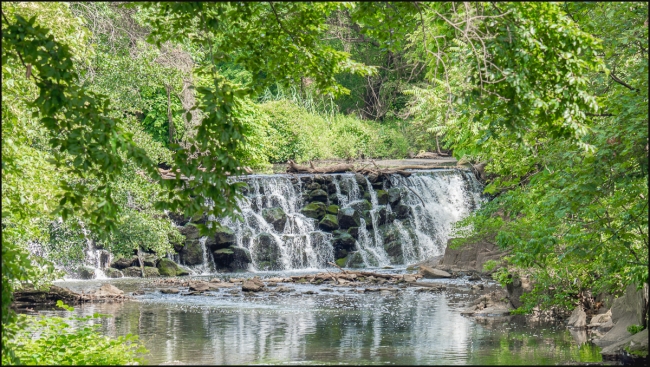The 23-mile Bronx River winds down through southern Westchester County and the Bronx creating a peaceful corridor of green. Called Aquehung or “River of High Bluffs” by the Mohegan Indians who lived and fished along it, the river attracted European traders, farmers, and millers in the 1600s and 1700s. The construction of the New York Central Railroad in the 1840s turned the valley into an industrial corridor, and by the end of the 19th century the Bronx River had degenerated into what one official commission called “an open sewer.”
Two major reclamation projects served as buffers against further industrial development. In 1888, land was set aside for Bronx Park, which would include the New York Botanical Garden and the Bronx Zoo. In the early 20th century, the first modern automotive parkway with restricted frontage, limited access, and grade separations was built along the Bronx River in New York City and Westchester County. The Bronx River Parkway was initiated in 1906 as a river conservation effort; however, efforts lagged until after World War I. It was not until 1925 that the 15.5-mile linear park and winding roadway, between Bronx Park in New York and the Kensico Dam in Valhalla, was completed.
The automobile industry had rapidly expanded in the meantime, and the beautifully landscaped, curvilinear Bronx River Parkway was greatly appreciated by car owners. Driving along at 35 miles per hour, they enjoyed picturesque views of the restored river and the surrounding park. The convenience and beauty of the many rusticated stone bridges that carried intersecting traffic over the parkway were equally unprecedented.
In 1938, the City of New York acquired land for the extension of the Bronx River Parkway from Bronx Park south to Soundview Park. Construction of the parkway was completed after the war, by 1952. Much of the land for the James Burke Ballfields (named by the City Council in 1968) was acquired in 1946. This 4.6-acre playground was opened to the public in 1956. It featured three softball diamonds, shower basin, swings, and slides for older children, as well as see-saws, sandpits, swings, and slides for tots.
In 1995, sixteen Council Members co-sponsored the local law which renamed the playground area in James Burke Ballfields in memory of six children who were slain between 1986 and 1990. Parque de los Niños (Park of the Children, or Children’s Park) was dedicated in memory of Annette Rosario, Shamira Bello, Heriberto Marrero, Nilda Cartagena, Lisa Ann Rodriguez, and Jessica Guzman, all of whom grew up in New York City. A Linden tree (Tilia spp.) was planted in the park that year. This tree has heart-shaped leaves and round, hard fruits which remain on the tree until winter. (Official Website of the New York City Department of Parks & Recreation).
Taken with a Sony A7IV and Sigma 150-600mm f/5-6.3 DG DN OS Sports Lens

